Originally from Brazil, Bruna is a research fellow at the University of Padua in Italy. Her research involves the study of anatexis and fluid regime of the deep portions of the continental crust using melt and fluid inclusions. Find out more about her work here.
Large scale partial melting of deep levels of the continental crust and subsequent segregation of granitic magma to the upper crust are the processes that ultimately resulted in the differentiation of the outermost portion of our planet. Therefore, investigation of those processes is fundamental to shed light on how the place we live in has formed and evolved.
Unfortunately, we cannot teleport ourselves deep into the crust to have a full picture of what happens down there, but we can find places where such deep levels are now exposed. The Ivrea-Verbano Zone (IVZ), northwestern Italy, is one of those places, and in fact there, we can travel from shallow crust to (almost) mantle depths. This is possible because tectonic processes have tilted a whole crustal section permitting us to thoroughly examine its geology. And that is what geologists from all over the world have been doing since the 1900s (to the best of my knowledge!). As result the IVZ is one of the most well-studied places on Earth, yet there is still much to be done.
I moved to Italy in June 2017 to do a postdoc on melt inclusions in migmatites and granulites from the IVZ. So, I had to visit this wonderful natural laboratory a few times in order to collect the samples.
In the IVZ, the so-called Kinzigite Formation is a typical metasedimentary sequence composed of metapelites, interlayered with metagreywackes, metabasites, and minor marbles and quartzites. This sequence is best exposed in the Val Strona di Omegna (in English, Strona Valley), and taking the tiny road across this beautiful and picturesque valley one can see rocks from amphibolite facies up to granulite facies. To my postdoc project that was the best place to investigate the evolution of crustal melting with increasing metamorphic grade of the same continuous sequence.
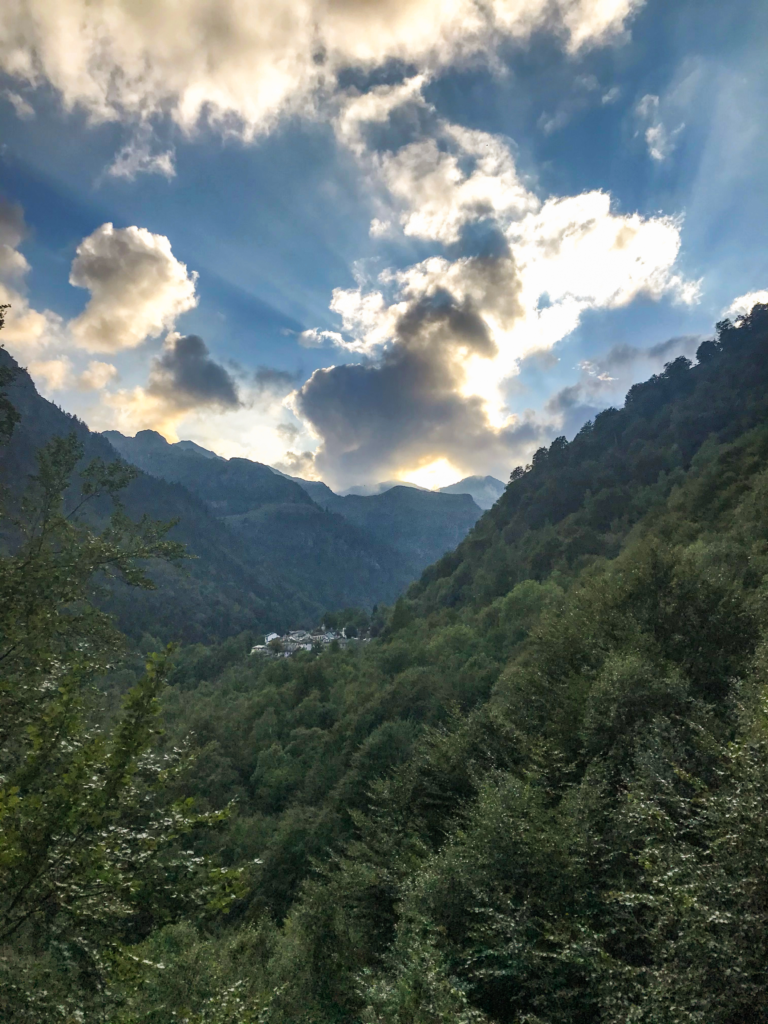
Typical view of the Strona Valley 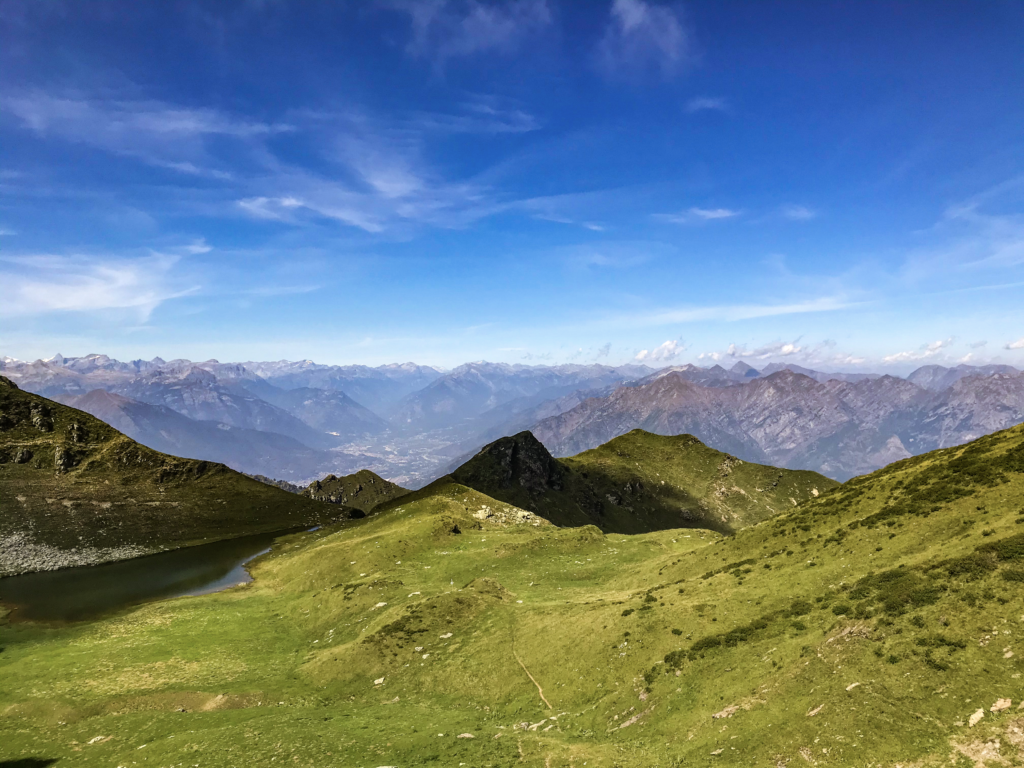
Stunning view of the Alps
Fieldwork in IVZ can be done by car (stop, check outcrop and go), and even if this is not the funniest way, it’s still amazing because it is a gorgeous place indeed.
Better still, if there is enough time, is to walk on the many paths (or sentieri in Italian) found there. In this case, one should be prepared and fit to go up and down the mountains, looking for outcrops (carrying rocks!) and enjoying absolutely breathtaking Alpine scenery.
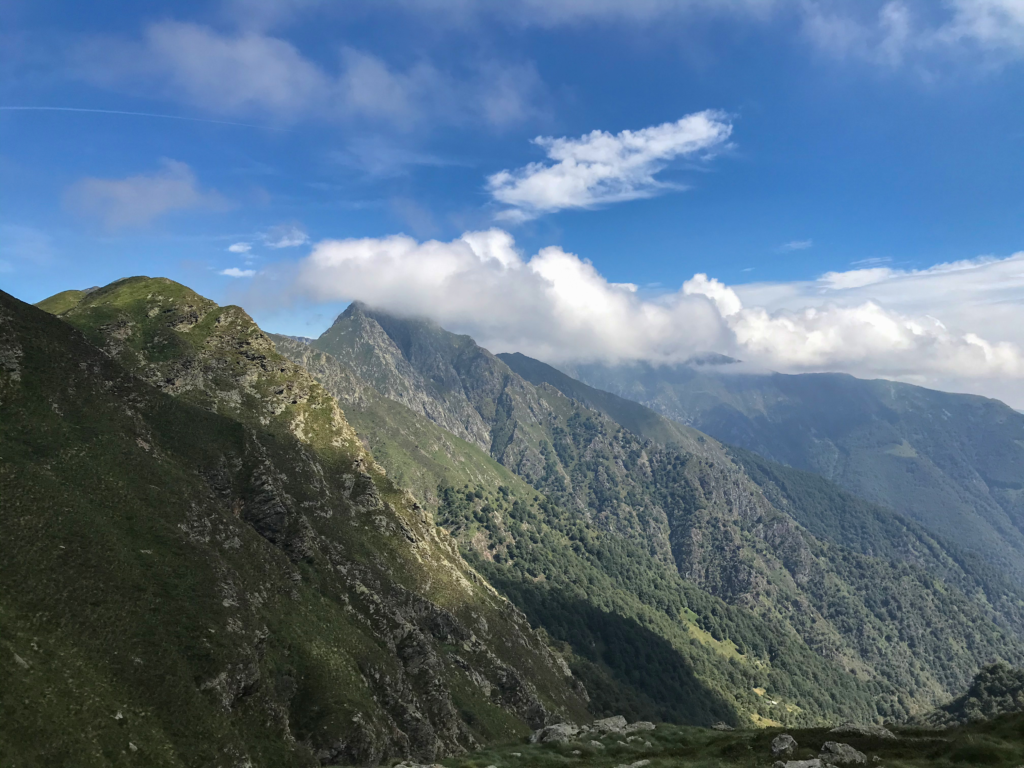
Breathtaking scenery 
Little church in the middle of nowhere
In between one outcrop and another, one can find a lost little church in the middle of nowhere, or a tiny stone house up on the mountains. Quite bucolic, and the perfect place for a lunch break!
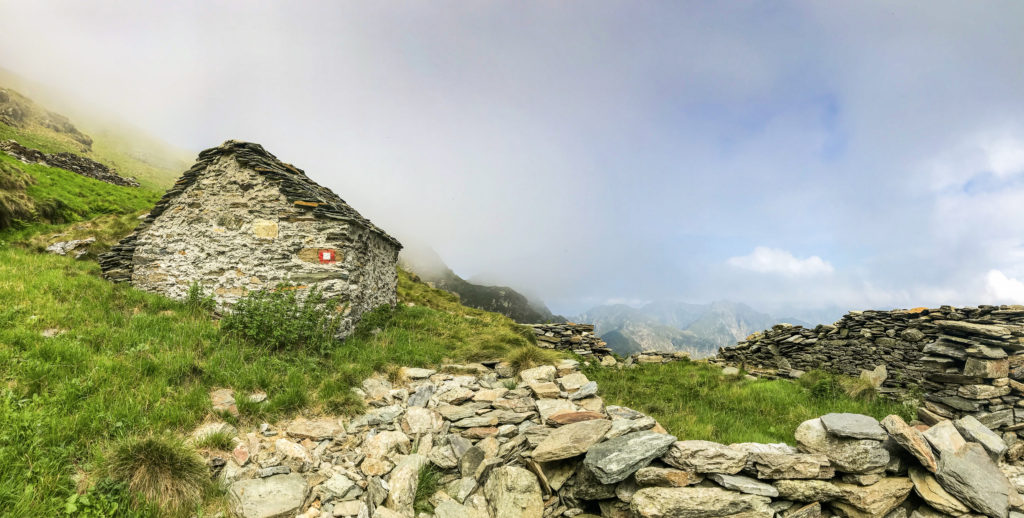
But be aware that it is not always an easy way, some of these paths can be much more ‘wild’ than expected, and going uphill sometimes seems endless…
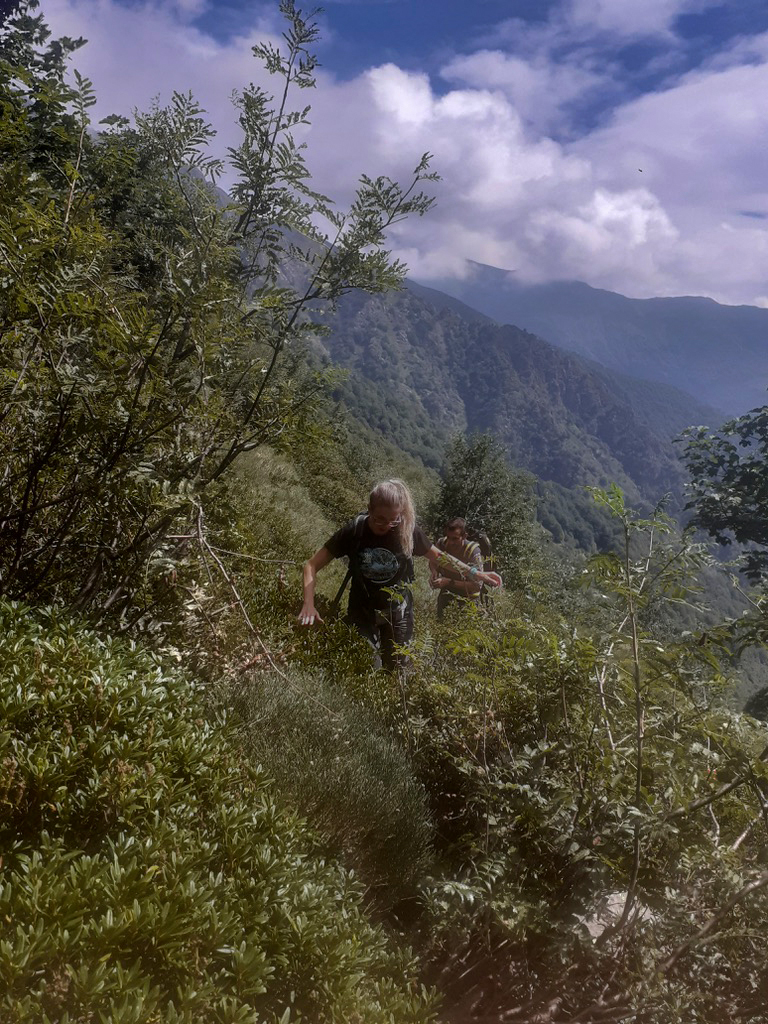
Wild path trying to find rocks 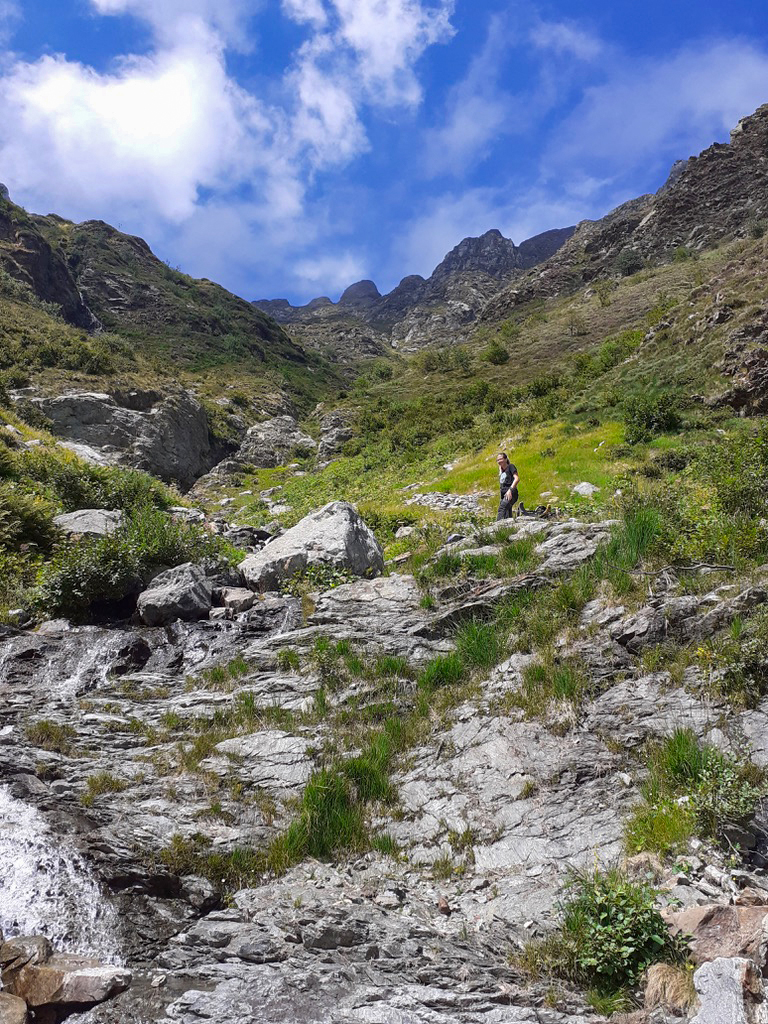
Climb and climb some more and then … more!
Different options for accommodation are possible, and I heard that a B&B at Forno is the usual choice for many geologists that go to the IVZ. But in our case, we actually decided to rent an apartment at an even more convenient place (in my opinion), the village called Campello Monti, located at the very end of the Strona Valley.
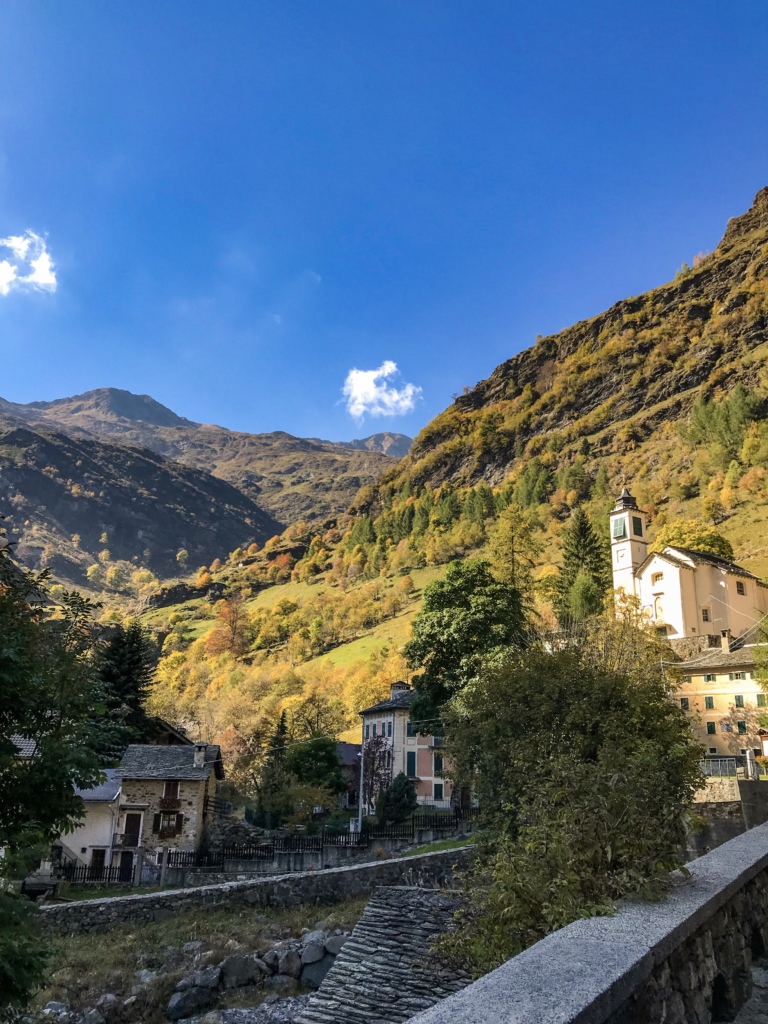
The houses at this charming place are really old and can only be reached by foot. Indeed, people only live there during the summer. Every year, at the beginning of October everything closes and people scape down to the pianura (in English flat land) before the bad weather hits. Roads are not cleaned during the winter and people can only arrive there using snowshoes or skis. As you can imagine not many people do…This tiny village is really captivating, and even if there are not many restaurants (to be honest there is ONE), the food is absolutely delicious (and cheap, if that is relevant!). I guess that is another of the great many advantages of doing field work in Italy: by the end of a tiring day, you will for sure have a wonderful dinner and excellent quality wine. Sorry, no pictures are available from dinner time (I was too busy!).
Still about Campello Monti, it is located basically in the contact between the supracrustal sequence and the rocks of the so called Mafic Complex (a large mafic intrusion that in the early days was thought to be the trigger for high temperature metamorphism; that idea no longer holds). Really cool garnet-bearing gabbros (crustal contaminated) crop out there.
During the trips I did to IVZ, I was actually interested in collecting the metapelitic rocks since the melt-in isograde up to the real-deal migmatites and granulites of the sequence. My goal was to find former melt inclusions (that we call nanogranitoids) in the garnet from these rocks in order to recover the melt compositions and fluid regime with increasing P-T conditions. Metapelites along the sequence vary from muscovite-biotite schists with incipient leucosomes, through typical stromatic metatexites and finally diatexites.
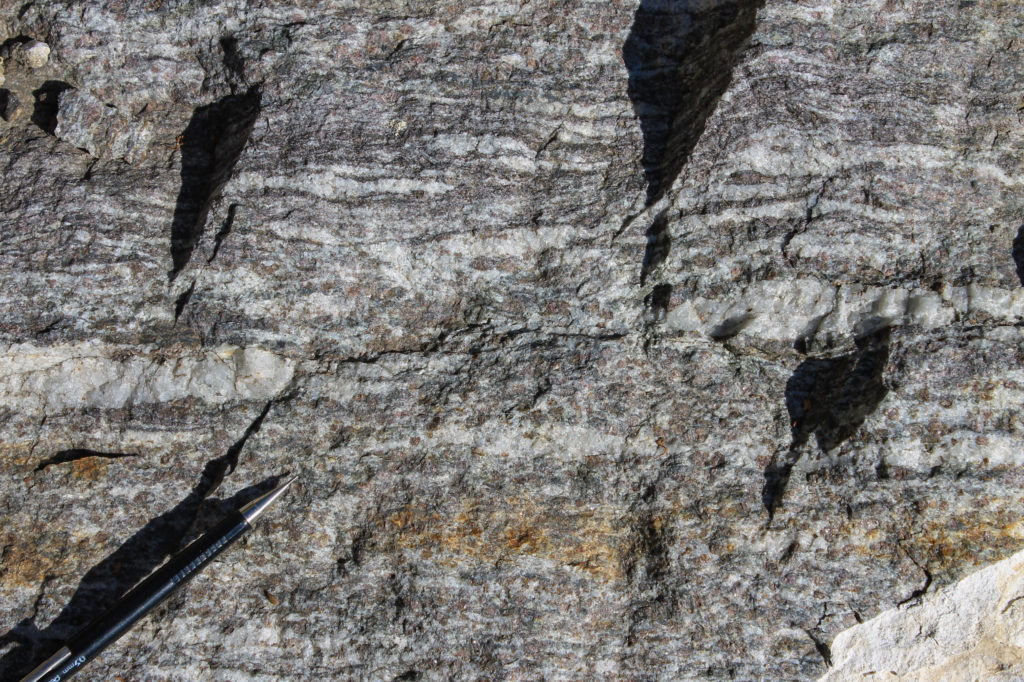
Stromatic metatexite 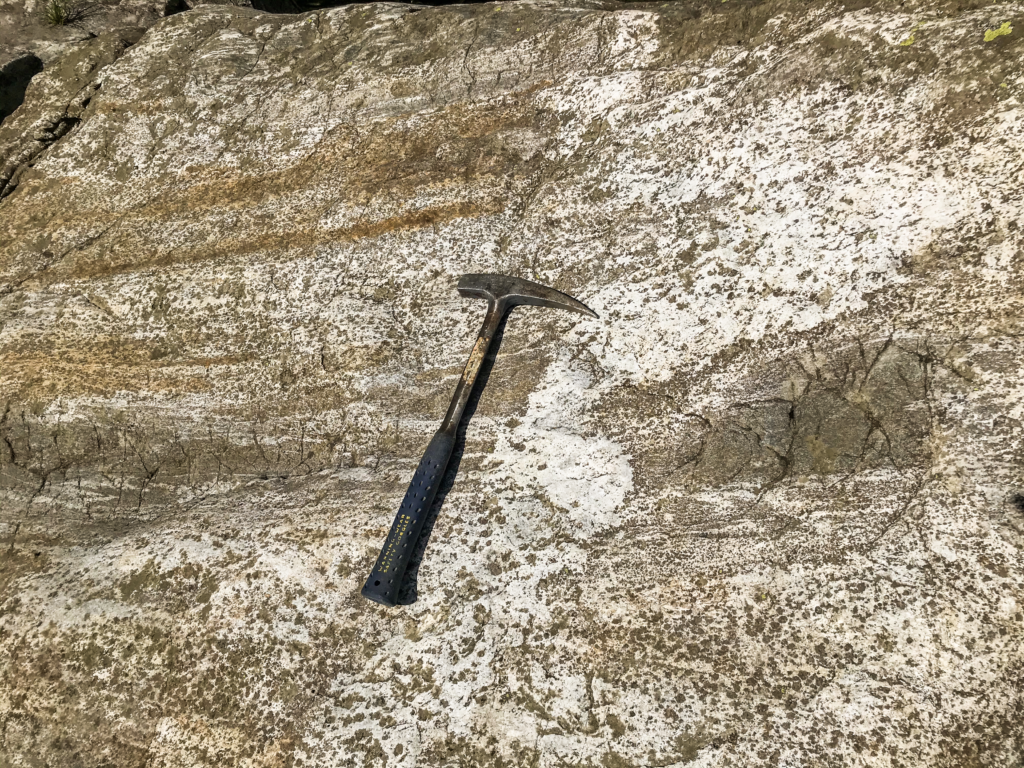
Schollen diatexite 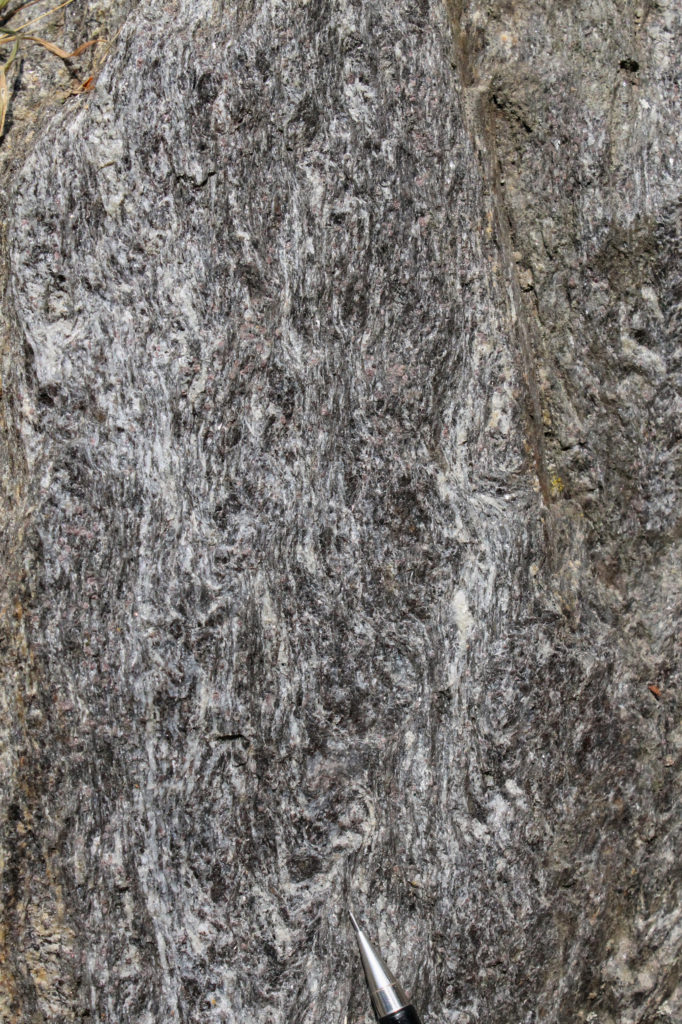
Metapelite with incipient melting
From upper amphibolite to granulite facies, peritectic garnet was produced during partial melting of the metapelites and using an optical microscope (see pictures below) it is possible to see that the garnet contains abundant single mineral (e.g. quartz, zircon, apatite, rutile) inclusions and polycrystalline inclusions (of about 10 µm in size).
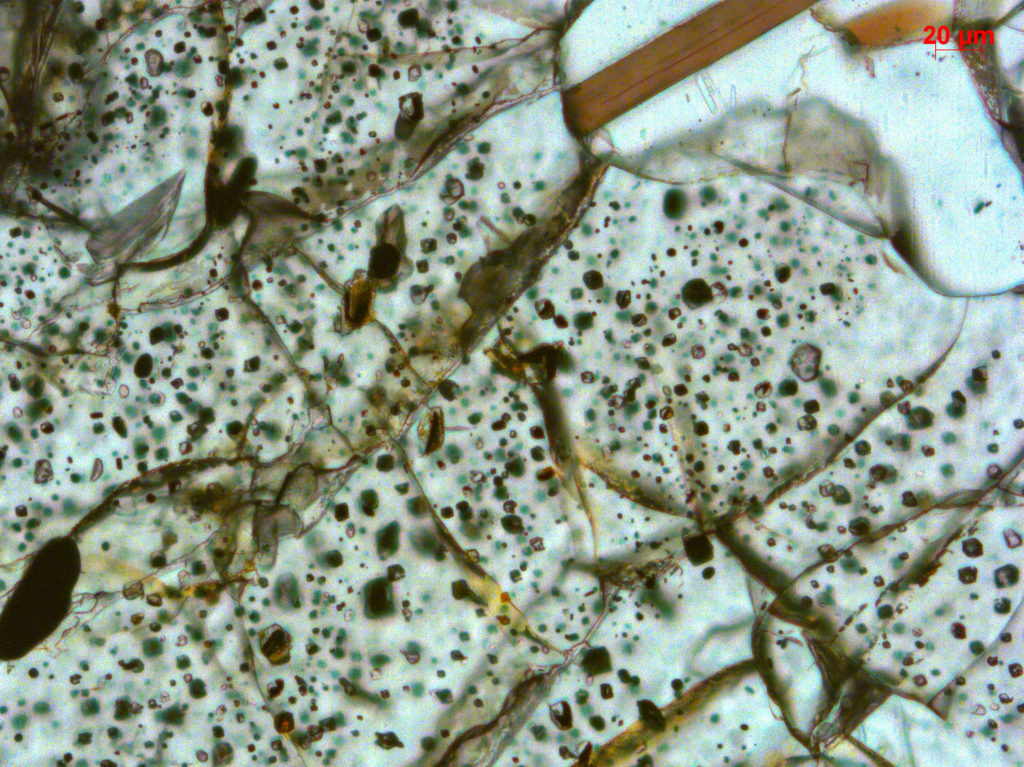
(PPL) 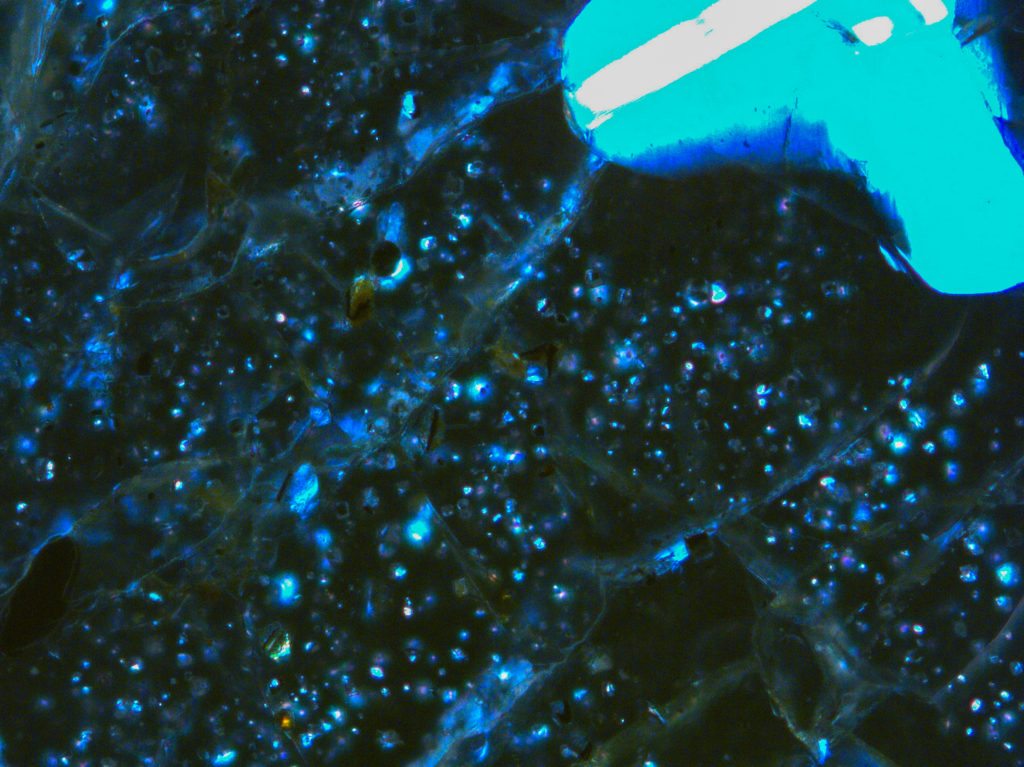
(XPL)
My detailed study revealed that those polycrystalline objects were actually two different types of inclusions: 1) Nanogranitoids, which are former droplets of melt crystallized into a cryptocrystalline aggregate of granitic assemblage (quartz, K-feldspar, plagioclase and mica), and 2) Multiphase fluid inclusions, composed not only by fluids such as CO2, CH4 and N2 but also carbonates and hydrous-bearing silicates. Some conclusions of the main scientific results of the project in Ivrea were that carbonic fluid-present melting of the deep continental crust represents, together with breakdown melting reactions, a fundamental key process in the origin of crustal anatectic granitoids, and that multiphase fluid inclusions in peritectic minerals are the one true evidence of fluids trapped at high P-T conditions.
To wrap it up this post, as I mentioned at the beginning, the IVZ is one of the most investigated places in the world, yet it remains as a fundamental laboratory to petrologists in so many ways. It is similar to an outcrop visited several times, you can go there again, and again, and you will always see/discover something new. That, to me, is a big motivation to keep science going!
If you are curious to know more details about the results of this project please check the following publications:
Carvalho et al. 2019. Anatexis and fluid regime of the deep continental crust: New clues from melt and fluid inclusions in metapelitic migmatites from Ivrea Zone (NW Italy). Journal of Metamorphic Geology 37(7), 951–975.
Carvalho et al. 2020. Primary CO2-bearing fluid inclusions in granulitic garnet usually do not survive. Earth and Planetary Science Letters 536.
Bartoli & Carvalho (accepted). Anatectic granites in their source region: a comparison between experiments, thermodynamic modelling and nanogranitoids (coming soon on Lithos)
![]() This work is licensed under a Creative Commons Attribution-NonCommercial-ShareAlike 4.0 International License.
This work is licensed under a Creative Commons Attribution-NonCommercial-ShareAlike 4.0 International License.
